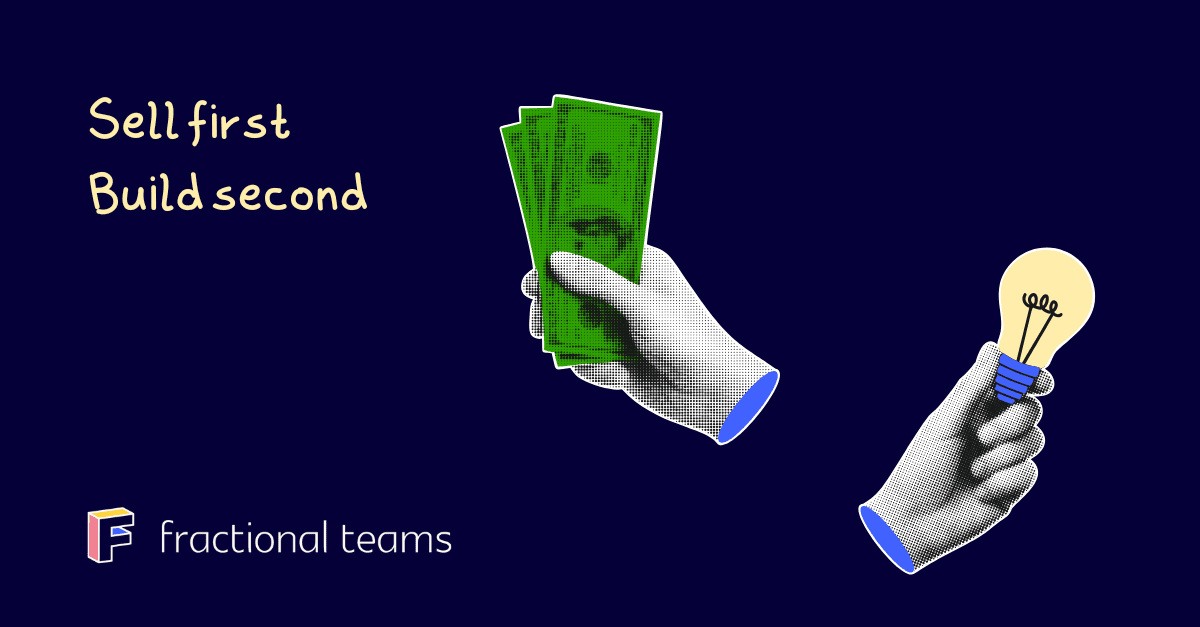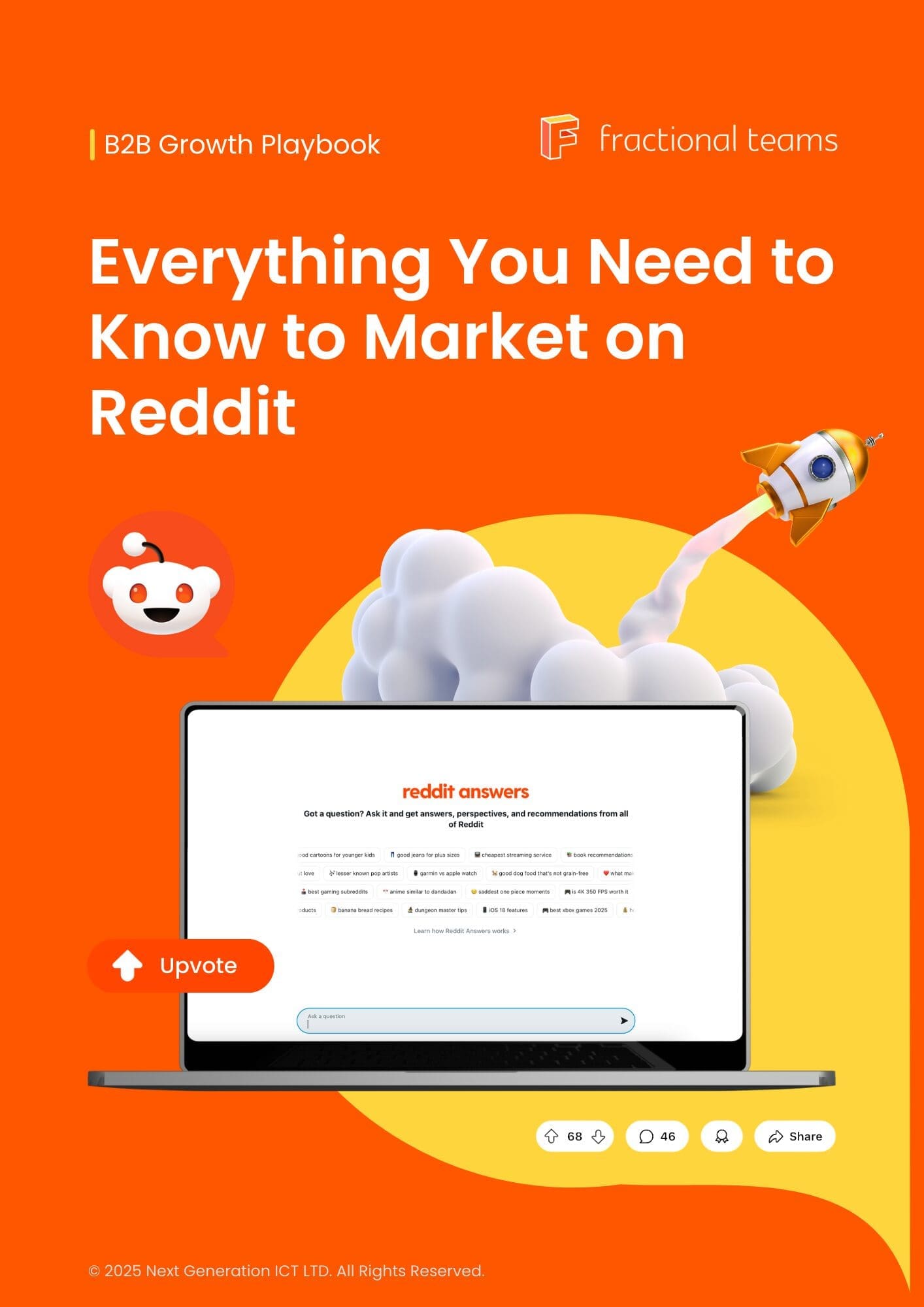Sell first, build second: Does it actually work?
“Sell first, build second” is one of those startup mantras you’ll often hear on Reddit, in founder circles, and in product communities. On the surface, it makes perfect sense: why spend months building something if no one is willing to pay for it? But does it always work in practice? The truth is a little more complicated.

Table of Contents
Why is the idea so popular?
Founders hate wasting time. Building a product takes energy, money, and focus. If you can validate demand before you even start building, you cut out a huge risk.
The logic is simple:
- If no one is interested when you pitch the idea, you’ve just saved yourself weeks or months.
- If people sign up, pre-pay, or show genuine excitement, you know you’re onto something.
That’s the dream behind “sell first, build second”.
The problem with only selling
Here’s the catch: people often say your idea is great, but when it’s time to actually use it or pay for it, they disappear. Praise doesn’t pay the bills.
In B2B especially, buyers often want more than a promise. A landing page, a Figma mock-up, or a neat pitch might spark interest, but serious customers usually need to see something real. A beta version, even if rough, builds trust in a way words can’t.
Winning attention and building trust
Even if you take a “sell first” approach, you’re working against the clock. Some studies suggest the average attention span is now just over eight seconds. Whether or not that number is exact, one thing is clear: it’s easier than ever to lose people’s attention in a world full of distractions.
This is why how you present your idea matters just as much as the idea itself.
A common pitfall is trying to show off everything at once – every screen, every feature, every possible use case.
But buyers don’t get excited about a list of features. They get excited about a better version of their day. Your pitch should feel simple and focused.
The best demos work like a short story:
- Open with a pain point your audience instantly recognises.
- Highlight why it’s frustrating or costly to ignore.
- Show exactly how your product takes that pain away.
- End by painting the picture of what life looks like with the solution is in place.
It doesn’t need to be flashy. In fact, the simpler and clearer the flow, the easier it is to earn trust. A polished but confusing demo rarely beats a basic one with a strong message.
Think of it as your first handshake: a moment to show you understand the problem and have built something meaningful. When that comes through, saying “yes” feels like the natural next step.
For more ideas on engaging buyers in the moment, see our guide to interactive content that actually works in B2B.
Validate first, build second
Instead of treating “sell first” as an absolute rule, think of it as part of a cycle: validate, build, and sell — in that order, over and over.
Here’s how that could look:
Validate the problem
Before showing your solution, test if the pain is strong enough. One way is to create a landing page that only talks about the problem and see if people sign up. Paid ads, clicks, and scroll depth can give you quick feedback.
Build a quick customer picture with our Persona Profile template so your early calls aren’t random.
Show something small
Use a Figma design, a clickable prototype, or even a PowerPoint demo to get conversations moving. Before you open Figma, map the pains and gains you’re solving with a Value Proposition Canvas, it forces you to tie features to real jobs or outcomes. If you also need a one-page view that keeps product, market, and delivery aligned, capture the big picture in a Product Canvas.
Build the basics
Create the smallest working version. Not polished, not perfect – just enough to deliver value.
What to measure during validation:
Number of conversations booked, % who ask for a demo after a call, pilot sign-offs, and any revenue committed. If a signal isn’t trackable, it’s a nice story – not validation.
Repeat
MVP → Sell → Build More → Sell More. Each loop makes the product closer to what people actually need.
This way, you’re not just “selling” in a vacuum. You’re building based on what’s proven to matter.
Validating ideas on Reddit
Not every test needs paid ads or a landing page. Sometimes, the best validation comes from listening to real conversations already happening online. Reddit is especially useful here because communities are open, honest, and quick to share what’s really on their minds.
Instead of leading with a pitch, try asking how people currently solve the problem you’re tackling. Which parts of your idea get pushback? Which spark curiosity? Which are ignored? That’s raw data you can use to shape your MVP before you build.
We’ve put together a Reddit Playbook with practical steps for using Reddit to validate ideas, gather feedback, and build awareness without coming across as salesy.
Get The Ultimate Reddit Playbook
The Reddit Playbook is based on real-world experience with B2B brands. It’s a practical guide for founders, marketers, and sales teams, covering both the basics and advanced strategies for engaging authentically, spotting opportunities, and growing your presence without relying on big ad budgets.

Where it can go wrong
Of course, there are risks:
- If you overpromise and can’t deliver quickly – you lose trust.
- If you mistake polite interest for demand – you’ll waste time.
- If you skip the build step for too long – your credibility suffers.
Selling without building isn’t about tricking people. It’s about making sure you’re building the right thing at the right time.
So, does it work?
Yes, but not as a one-size-fits-all rule. For consumer apps, “sell first” might mean a waitlist and some clever marketing. For enterprise SaaS, it might mean a rough beta you can actually demo.
The phrase isn’t really about selling before building at all. It’s about reducing wasted effort. If you think of it as validate first, build second, you’ll save time, learn faster, and end up with a product people want to pay for.
Dariia Panchenko
Hi! I'm Dariia Panchenko, Analytics and Community Manager at Fractional Teams. I write about the best B2B marketing strategies and practices.
